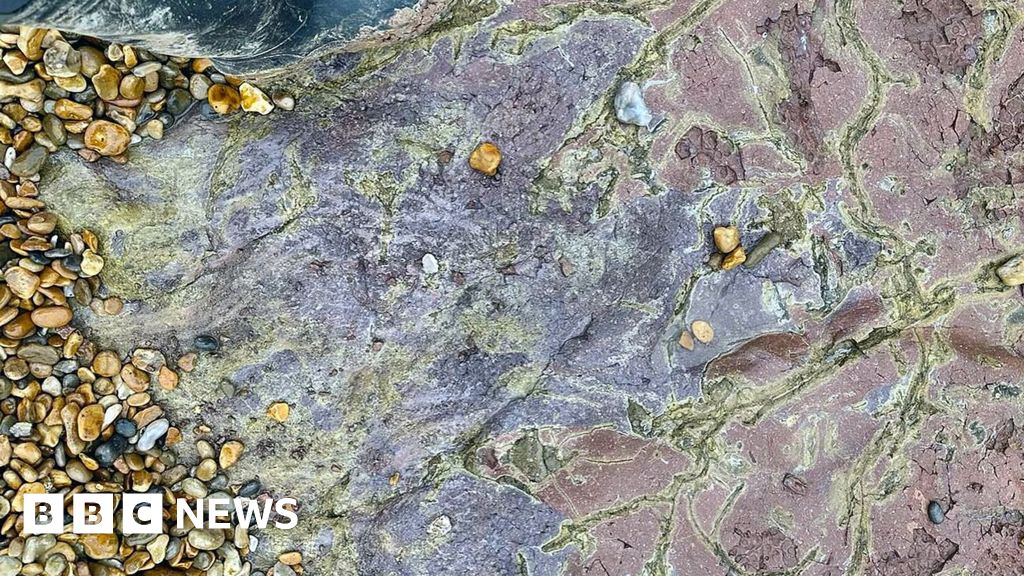Huge dinosaur footprint found on Isle of Wight beach – BBC.com

A palaeontologist has discovered a huge dinosaur footprint on a beach on the Isle of Wight.Fossil guide Joe Thompson said the 130-million-year-old Iguanodon print at Shepherd’s Chine was the best footprint he had ever found.The three-toed shape, which is almost 1m (3ft) across, was revealed after storms stripped the beach of shingle.Mr Thompson described the find as “really lucky”, adding it would wash away in “a few months”.Iguanodons were large herbivores, measuring up to 11m (36ft) long and weighing up to 4.5 tonnes.Mr Thompson said he had been looking for fossilised bones on the beach near Atherfield when he spotted a “big purple toe” in a gap in the shingle.He said: “Anything that’s that old and that exciting – it gives you such a rush, especially a huge, almost 1m-long footprint just lying on the beach.”It just makes you think about everything that happened before humans even existed.”Mr Thompson conducts tours for Wight Coast Fossils and has recently launched South Coast Fossils, offering fossil walks at Highcliffe, near Christchurch.He advises anyone who finds a dinosaur footprint to photograph it, preferably with something like a shoe for scale, and send the picture to a local museum or expert for identification.He said: “It’s a shame they are not completely permanent – they do wash away after a period.”In the mud, it will only be around for a few months at the most.”Mr Thompson said the footprint was in the “top 10” of all his fossil finds “because it’s such a beautiful example”.”It’s probably the best footprint I’ve discovered myself,” he said.You can follow BBC Hampshire & Isle of Wight on Facebook, X (Twitter), or Instagram. The bone was unearthed by researchers from the University of Reading.Experts say the discovery will help them understand what animals were eating during the Cretaceous period.The vertebra is from the Swindon Stegosaur, which was found in the town in 1874.About 200 footprints made by dinosaurs 166 million years ago have been unearthed in a quarry in Oxfordshire. The skeletons – two Allosaurus and one Stegosaurus – date back approximately 150 million years.Copyright 2025 BBC. All rights reserved. The BBC is not responsible for the content of external sites. Read about our approach to external linking.






